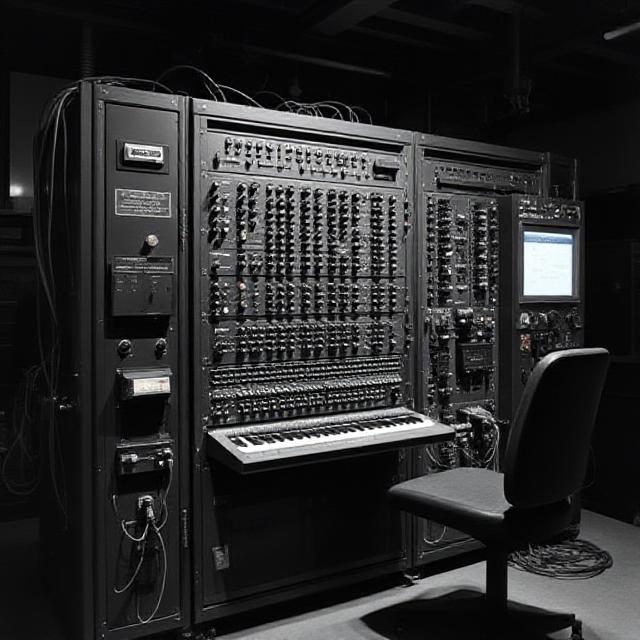ENIAC the first programable computer
What is your favourite action your personal computer can perform?
Nowadays, computers are an integral part of nearly every area of life, to the extent that it’s hard to imagine a world without them. But did you know that the first computers were massive machines capable of performing only the specific tasks they were designed for? So how did we get from there to where we are today in less than a century?
In this blog, we’ll try to answer that question by telling you the story of ENIAC (Electronic Numerical Integrator and Computer), the first programmable multi-purpose computer.
During World War II, the countries involved were investing significant funds in developing technologies that might give them an advantage in the conflict. The United States was no exception. Among other projects, its government funded the creation of ENIAC – a machine designed to quickly calculate the trajectories of projectiles.
Work on the machine began early in 1943, while the situation on all fronts remained intense and uncertain. The project was based at the Moore School of Electrical Engineering at the University of Pennsylvania. The original team was led by American physicist John Mauchly and engineer J. Presper Eckert Jr., under the direction of Herman Goldstein. The famous mathematician John von Neumann joined the project the following year as a frequent consultant. Also crucial to ENIAC’s success was a group of six women who worked as programmers. They designed algorithms and manually adjusted switches based on the problems ENIAC needed to solve.

Initially, ENIAC was programmed to compute values for artillery range tables. Instructions were communicated to the machine via plugboards, allowing it to operate at exceptional speeds once set up. Devices of that era, which relied on punched cards to read data, couldn’t compete with ENIAC’s electronic processing.
When ENIAC finally became operational (in late 1945 or early 1946), the war had already ended. The machine was so large that it spanned three walls of the school’s basement and had to be arranged in a U shape. It featured conditional branching, meaning it could execute different instructions – or even change the order of instructions – based on data values. This flexibility allowed ENIAC to perform tasks beyond those it was originally designed for.
ENIAC contained more than 17,000 vacuum tubes, 70,000 resistors, 10,000 capacitors, 6,000 switches, and 1,500 relays. It weighed around 30 tons, making it the most complex electronic system of its time. To keep it running, engineers followed a circuit design guideline that enhanced reliability. They ran detailed tests on components and avoided pushing them to their limits, which helped extend the life span of the vacuum tubes.
However, this enormous machine had a few downsides. Besides its massive size, it generated a lot of heat – about 174 kilowatts, which required continuous air conditioning. Also, to solve any new problem, ENIAC had to be manually rewired, a process that could take days. Nevertheless, it was faster at calculations than any other machine of the time.
Given that the war had ended by the time ENIAC was completed – and that the U.S. government had spent around $400,000 on it – it had to be put to use. One of its first tasks was to perform calculations for the construction of the hydrogen bomb, helping to identify flaws in the proposed design. After that, ENIAC was moved to the Ballistics Research Laboratory in Aberdeen, Maryland, where it was used to calculate artillery tables, predict weather patterns, support atomic energy research, and perform thermal ignition and other calculations in various scientific fields. The machine operated continuously for over 70,000 hours until the U.S. Army retired it on October 2, 1955. Once completed, ENIAC was about 1,000 times faster than its contemporary counterparts and could perform roughly 5,000 additions per second.
Part of this historic machine is now on exhibit at the Smithsonian Institution in Washington, D.C.
It’s truly amazing how far technology has come in 80 years. Today, most households have at least one personal computer, tablet, or smartphone – devices that are smaller, more powerful, and vastly more capable than ENIAC ever was. What was once considered a technological miracle is now almost laughable by comparison. Some say we live in the “computer era” and it all began with ENIAC.
